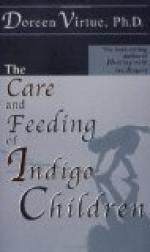What are the essential points in milk selected for the feeding of infants?
That it comes from healthy cows, and that it is clean and fresh.
Is it not important to select a rich milk?
By no means; in fact the very rich milk of highly bred Jerseys and Alderneys has not been found nearly so satisfactory in infant feeding as that from some other herds, such, for example, as the common “grade cows.”
Which is the better, milk from one cow or the mixed milk of several cows?
The mixed, or “herd milk,” is usually to be preferred since it varies little from day to day; while that from a single cow may vary considerably.
How fresh is it important that cow’s milk should be for the best results in infant feeding?
This depends very much upon the season, and how carefully milk is handled. As ordinarily handled at the dairy and in the home, milk should not be used for infants in winter after it is forty-eight hours old; in summer not after it is twenty-four hours old, and it may be unsafe in a much shorter time. When handled with especial care milk may be safe for a longer time.
What are the two essentials in handling milk?
1. That it be kept clean and free from contamination. This necessitates that cows, stables, and milkers be clean, and that transportation be in sealed bottles; also that those who handle the milk do not come in contact with any contagious disease. All milk-pails, bottles, cans, and other utensils with which the milk comes in contact should be sterilized shortly before they are used, by steam or boiling water.
2. That it be cooled immediately after leaving the cows, and kept at as low a temperature as possible; to be efficient this should not be above 50 deg. F.
Milk produced under hygienic conditions and handled with special care is sold in bottles in a number of cities under the name of “certified,” “guaranteed,” or “inspected” milk. When available such milk should be used for infants. Of course the extra care bestowed in its production and transportation increases the cost of the milk, but the best will usually be found in the end to be the cheapest.
How should milk be handled in the home when obtained fresh from the cows?
That to be used for infants should be strained through a thick layer of absorbent cotton or several thicknesses of cheese-cloth into quart glass jars or milk bottles which should be covered and cooled immediately best by placing the bottles quite up to their necks in ice water or cold spring water, where they should stand for at least half an hour. That required for children who take plain milk may now be poured into half-pint bottles, stopped with cotton, and put in the ice-chest, or the coolest place possible. This first rapid cooling is very important and adds much to the keeping qualities of the milk. Milk loses its heat very quickly when cooled in water, but very slowly when it is simply placed in a cold room. After standing four or five hours the top-milk may be removed; after twelve to sixteen hours the cream may be removed.




